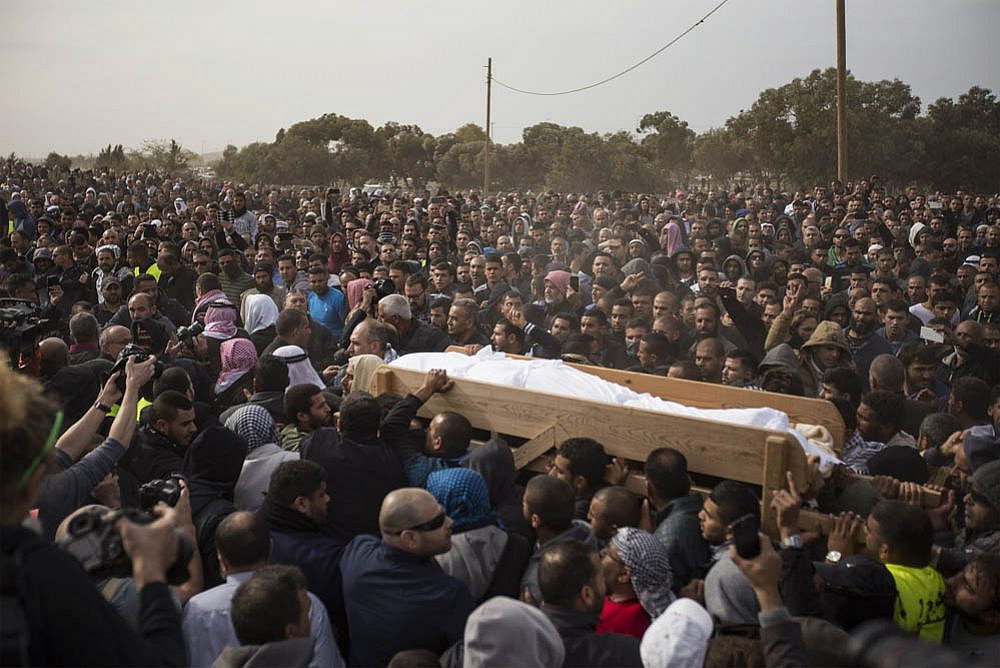A new petition to Israel’s High Court of Justice challenges the decision by Israeli authorities to close the investigation of the police killing of Yacoub Musa Abu al-Qi’an in the unrecognized Bedouin village of Umm al-Hiran in January 2017.
Abu al-Qi’an, a Bedouin citizen, and police officer Erez Levi were killed and several others wounded when Israeli police entered Umm al-Hiran in the Naqab/Negev to demolish several homes on January 18, 2017.
During the raid, carried out by a special police unit that enforces building and planning laws, the officers fired at and killed Abu al-Qi’an, who had just started his car at the time. He subsequently careened into Israeli police officer Erez Levy, killing him. Moments later, police fired tear gas, stun grenades and sponge-tipped bullets at Joint List MK Ayman Odeh and other activists who tried to get closer to the fatally-wounded Bedouin resident. Odeh, who was shot in the back and the head, was evacuated bleeding to a nearby hospital.
The Police Internal Investigations Department (PID), a Justice Ministry body partly comprised of former police officers, launched a preliminary investigation into the events. But Israeli prosecutors closed the case in May 2018, saying there was no basis for criminal proceedings to against the officers involved.
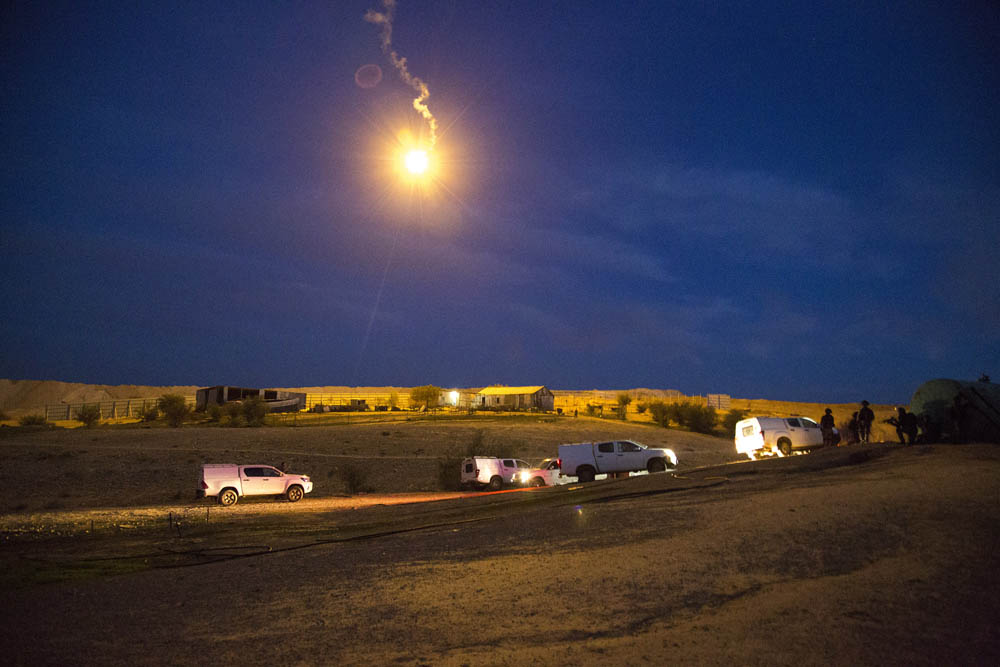
The details laid out in the new petition, which was filed by the Public Committee Against Torture in Israel (PCATI) and Adalah, give us a glimpse into what transpired on the night of January 18, 2017. A police nurse and medics refrained from providing medical aid to Abu Al-Qi’an as he bled to death; a police officer opened fire despite admitting that he did not feel in danger; another officer expressed doubts to his superior about identifying Abu al-Qi’an as a “terrorist;” and a commander declared Abu al-Qi’an dead without verifying that was the case.
The petition is based on an examination of investigative material conducted by criminologist Dr. Ariel Livneh, who sifted through materials including testimonies, documents, and video clips that until now had remained classified. The materials raise serious questions about the behavior of the police, the PID, and Israeli politicians, all of whom were quick to declare that Abu Al-Qian was a terrorist despite not having any evidence to back the claim. Moreover, they confirm what many residents, activists, witnesses, and private investigators have claimed for the past three years: that Abu al-Qi’an was not carrying out an attack.
The petitioners hope to force the PID to re-open the case and file indictments against those responsible for Abu al-Qi’an’s death. According to the petition, the PID’s investigative material included “substantial defects that go to the heart of the attempt to analyze the responsibility of the officers involved in the chain of events.”
The petition also claims that the decision to close the case was “extremely unreasonable” and “disregarded the considerable evidence gathered in the case, without any real attempt to find out the extent to which each of the police officers involved directly contributed to the death of Yacoub Abu Al-Qian.”
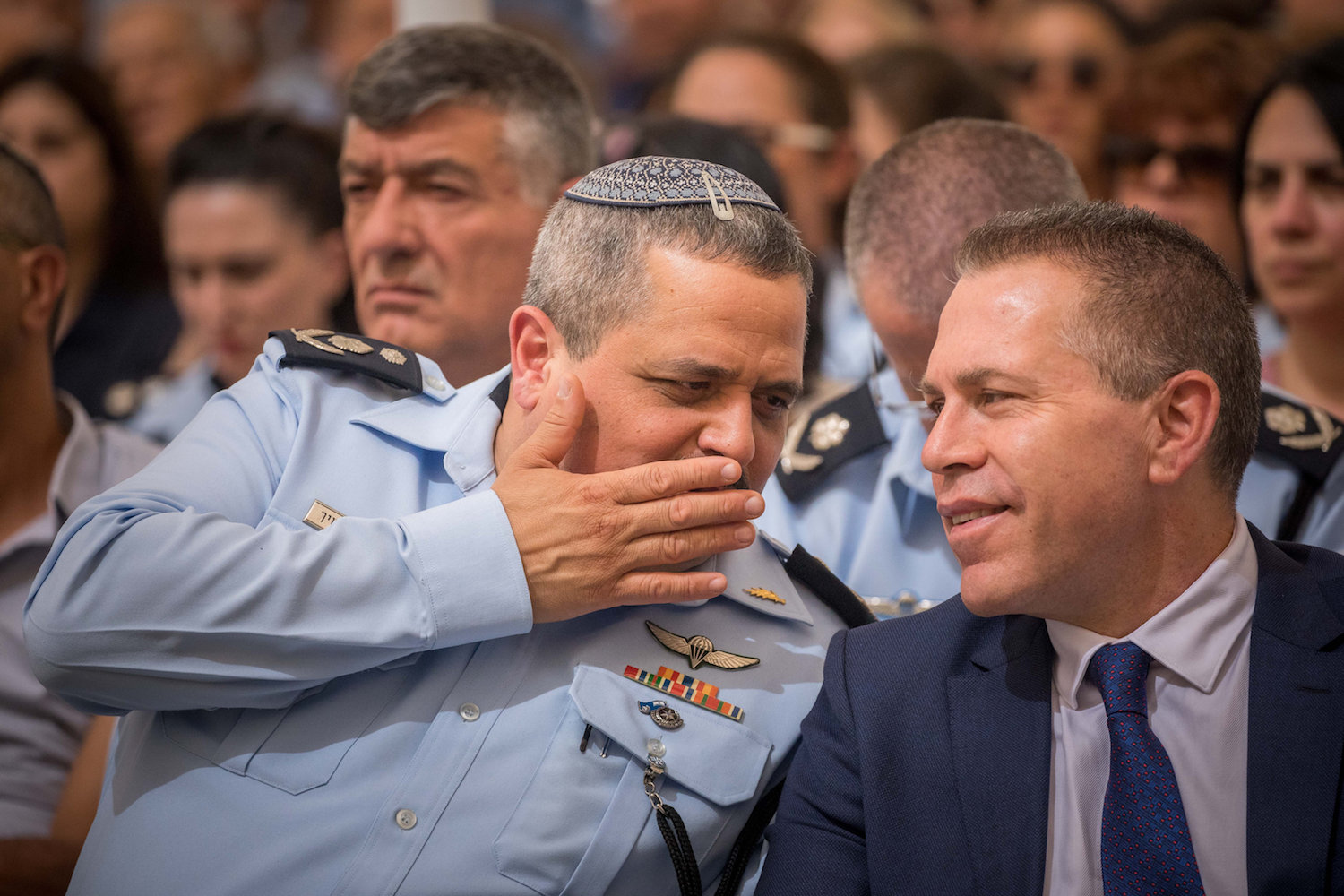
PCATI said in preparation of the petition that “Umm al-Hiran is a bloodstain in Israeli civil and police relations. A civilian and police officer were killed without any need and justification, the case was closed by the PID without opening a criminal investigation, and the police chief and Minister of Public Security Gilad Erdan declared that this was a terrorist attack, despite the fact that all the evidence said otherwise.”
Using the police’s own materials
Days after the incident, Local Call and +972 Magazine published a preliminary investigation by the London-based Forensic Architecture research center, analyzing footage filmed by Activestills photographer Keren Manor and a police drone operating above Umm al-Hiran during the raid. According to the investigation, Abu al-Qi’an lost control of his vehicle only after police shot him. Further claims made by the police, including that Abu al-Qi’an’s headlights were off and that he accelerated as he hit the policemen, were also debunked. A second Forensic Architecture report released in June 2019 included an investigation into Odeh’s shooting.
Witnesses cited in the petition’s materials further indicate that Abu al-Qi’an was left to bleed to death without being provided medical treatment that could have saved his life. According to the documents, many police officers, including a police doctor and paramedics, passed by or were near Abu al-Qi’an but did not approach him.
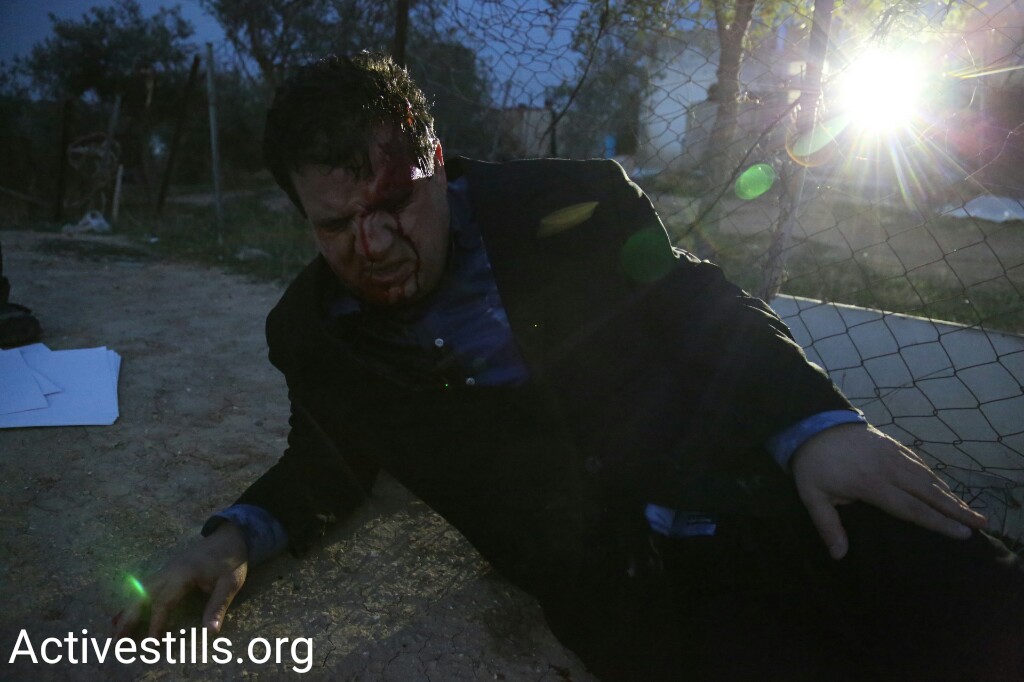
Ironically, the materials in the petition were collected by PID investigators themselves, including police reports, investigations, photographs, transcription networks, and more. And yet, somehow, none of the materials were enough for the police to formally open a criminal investigation.
“Every time one sees Abu al-Qi’an in the videos filmed by police, it is by coincidence,” said Livneh. “No one meant to film him. It’s like the story with MK Ayman Odeh who was shot in the head. PID gathered the materials but did not want or were unable to reach conclusions. This is very strange considering the number and quality of the materials they have.”
Because the decision to close the case in May 2018 was made by the Israeli attorney general, it cannot be appealed to the State Attorney’s Office. The petition must instead be filed to the High Court in the name of the Abu al-Qi’an family. The petitioners demand that the State Attorney, the attorney general, and the PID re-open the investigation.
From the moment of the shooting, Police Chief Roni Alsheikh and Minister Erdan declared that it was “undoubtedly a terrorist attack.” Even after PID declared this was not the case, and even after the Shin Bet determined that what happened in Umm al-Hiran was an “operational failure,” Erdan once again stated that “my sense is that there is a higher probability that it was a car-ramming attack.”
The GoPro body camera of one of the police officers on the scene tells a different story. N.G., who was among the first officers to arrive at Abu al-Qi’an’s vehicle after he was shot, documented his conversations with his commander five minutes after the incident. The transcript makes it is clear that at least some of the officers knew from the beginning that they were mistaken in thinking that Abu al-Qi’an was carrying out an attack.
The following is the transcript of the conversation:
N.G.: There are wounded people there, they shot at the vehicle.
[Chief superintendent in the background]: Where is the doctor?
Unidentified officer: What?
N.G.: There are wounded people there. They also shot at the vehicle. They thought he was a terrorist. You don’t remember? He came from here. They shot at him. Look man, there are wounded people there.
Unidentified officer: Wounded by gunfire?
N.G.: We need to check if there are also people wounded by gunfire. They shot at that car in the beginning when they thought he was a terrorist.
Superintendent R.A.: Our forces are also there.
N.G.: What?
Superintendent R.A.: Our forces are also there.
A PID investigator saw this video in July 2017 – but did not mention the exchange in his report.
‘Someone decided he was a terrorist’
According to the petition, the commander on the ground “did not report on the two-way radio that there was a wounded [person] to be examined, he did not send anyone to find out the condition of the wounded person, and in fact ignored the update.”
“The only update A. gave on the two-way radio was that Yacoub Abu Al-Qi’an was already dead, the opposite of what the policeman said when he told him he had pulled the wounded man out of the vehicle.”
According to PCATI, the police opened fire at Abu al-Qi’an’s vehicle at 5:57 a.m., and Abu Al-Qi’an was “pulled out” of the vehicle after about a minute. However, at 6:03, six minutes after the shooting, R.A. announced on the radio that Abu al-Qi’an was dead.
“To all the forces participating in the operation. The operation is now being inverted,” reported R.A. on the radio. “Our operations are announcing a reversal [ie. there is an attack on the police force]. I need a rescue helicopter for the wounded. A head wound and a leg wound. Also, a car-ramming terrorist in the X position [ie. killed]. Over.”
Why did Superintendent R.A. report on Abu Al-Qi’an’s death, when only a doctor or a paramedic is allowed to make a declaration of death? A number of officers, including senior ones, told the PID that this was the reason they themselves did not check if Abu Al-Qi’an needed medical assistance.
At 6:14 a.m., 17 minutes after the shooting, a top police commander asked the commander in charge of the demolition operation whether any of the officers were hurt in a “car-ramming attack.” The officer responded: “Affirmative. This is really a terrorist attack, a terrorist. A terrorist tried to run over an officer, hit him and killed him, the forces opened fire at the driver, he was killed.”
“How did Abu al-Qi’an turn into a terrorist?” reflects Livneh. “Who decided he was one? Because one officer announced it on the two-way radio? He told the PID that he did not even check whether the driver was dead. He has no authority to declare this kind of thing.”
Livneh argues that the message on the two-way radio, which all the police officers heard, was then quickly taken up by the police officers on the ground and later by the senior officials. “Someone decided he was a terrorist, and everyone went with that thought,” said Livneh.
No medical treatment
According to PCATI’s and Forensic Architecture’s investigations, Abu al-Qi’an bled to death for minutes after the shooting. At the same time, many police officers, paramedics, and a police doctor were in the vicinity of the car, treating the wounded police officers, including Erez Levy who later succumbed to his wounds.
All this was happening as Abu al-Qi’an was lying on the ground but with his feet still in the car, while the vehicle’s horn had jammed and made a loud noise — a fact that further calls into question the version of events provided by some of the police officers.

The petition states that “a number of police and medical personnel knew about Yacoub’s condition, or at least they needed to know that his condition required urgent medical treatment, and in fact let him die.”
According to the National Institute of Forensic Medicine, the gunshots hit Abu al-Qi’an in the shoulder and the knee only. Wounds of this kind typically do not lead to death. As such, the Institute report determined that his death was due to blood loss and took place within “many minutes” of the shooting.
The petition alleges that a senior officer, Y.A., was “caught lying in order to distance himself from the incident.” Although he claimed during his PID interrogation that he stood 20 meters away from “the same car-rammer,” according to PCATI’s investigation as well as footage from the incident, the officer in fact stood no more than three meters from Abu al-Qi’an.
Y.A. also claimed that he did not send medical treatment to Abu Al-Qi’an because he thought the vehicle was booby-trapped. But after PID investigators confronted him with the fact that many police officers were standing near the car, he said they were guarding the surrounding area.
The medical team also did not treat Abu Al-Qi’an. B., a police medic, told PID in February 2017 that he did not know that Abu al-Qi’an was wounded until the end of the incident. The video footage taken by police officers at the scene, however, revealed that the medic was speaking in full daylight with a police officer very close to Abu al-Qi’an, who was lying on the ground with his head turned toward the two.
Also present was a police doctor who was in charge of the medical force until the district police doctor arrived later. Dr. Y.R. said during her PID interrogation that she treated police officers who were wounded in the incident for 50 minutes, and at the time knew nothing about the wounded man lying only a few meters away from the wounded officers she was treating.
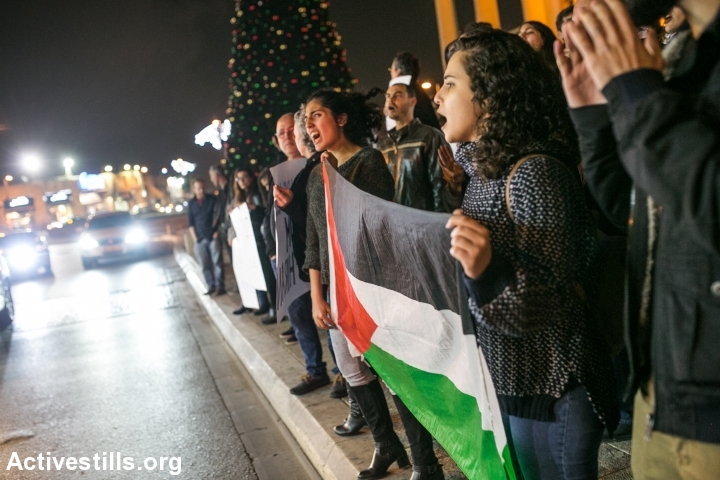
But according to the petition, evidence shows that the doctor only treated the wounded for about 15 minutes, rather than 50 minutes as she had claimed. By the time the wounded officers were evacuated, the sun was up. The police and medical personnel who evacuated one of the wounded officers on a stretcher passed about a meter or two from Abu al-Qi’an’s vehicle, where he was still lying.
What makes the doctor’s testimony even more problematic is the testimony provided by a police medic. Paramedic B.A. testified that he was with the doctor throughout the incident, and that he and the doctor saw Abu al-Qi’an’s body about 15 minutes after arriving at the scene; in other words, according to the paramedic, the doctor knew that Abu Al-Qi’an was there.
The medic further claimed during his interrogation that he did not call for treatment because Abu al-Qi’an appeared to be motionless. But a comparison of footage taken by officers on the ground shows that Abu al-Qi’an was indeed moving as he lay bleeding.
In addition, police footage shows that MK Ayman Odeh, who was later shot in the head by a sponge-tipped bullet, implored the police to check Abu al-Qi’an’s condition. They refused. By comparing various videos taken by officers on the ground, the petitioners were able to see Abu al-Qi’an moving his hand as he lied on the ground, still alive.
“I think that once it became clear to the officers that Abu al-Qi’an had hit their friends, one of whom was killed and the other injured, he became transparent to them, to everyone, from the junior officers to the most senior,” concludes Dr. Livneh.
Fifty bullets fired
Police opened fire at Abu al-Qi’an’s vehicle as he began to drive down the hill on which his house was located. At that time, three police officers approached his home, and when they saw his vehicle advancing, demanded that he stop. It is unclear whether Abu al-Qi’an, whose car windows were closed, heard their calls. In any case, he continued to drive slowly.
At that moment, one of the officers opened fire on the car. Another officer then opened fire, which prompted other officers to do the same. The bullets hit Abu al-Qi’an’s right knee and shoulder, his vehicle accelerated down the road, jumped after entering a creek, hit a number of officers including Levy, and continued on until a police van rammed into Abu al-Qi’an’s car.
“More than 50 bullets were fired at Abu Al-Qi’an’s vehicle,” said Dr. Livneh. “It is strange that only two hit him, because they were shot at point-blank range.” Livneh believes the two policemen who were close to the first officer who opened fire (and whose bullets most likely hit Abu al-Qi’an) did not shoot their weapons at all.
The petition raises the question over why the first officer fired in the first place. The petition also notes for the first time the full name of the officer who, according to PCATI’s examination conducted with Livneh’s help, fired the shots that resulted in Abu al-Qi’an’s death. “This examination could have been redundant had the PID done a simple operation and checked the bullet casings found on the ground, which were collected by the police and are in the possession of the PID,” the petition stated.
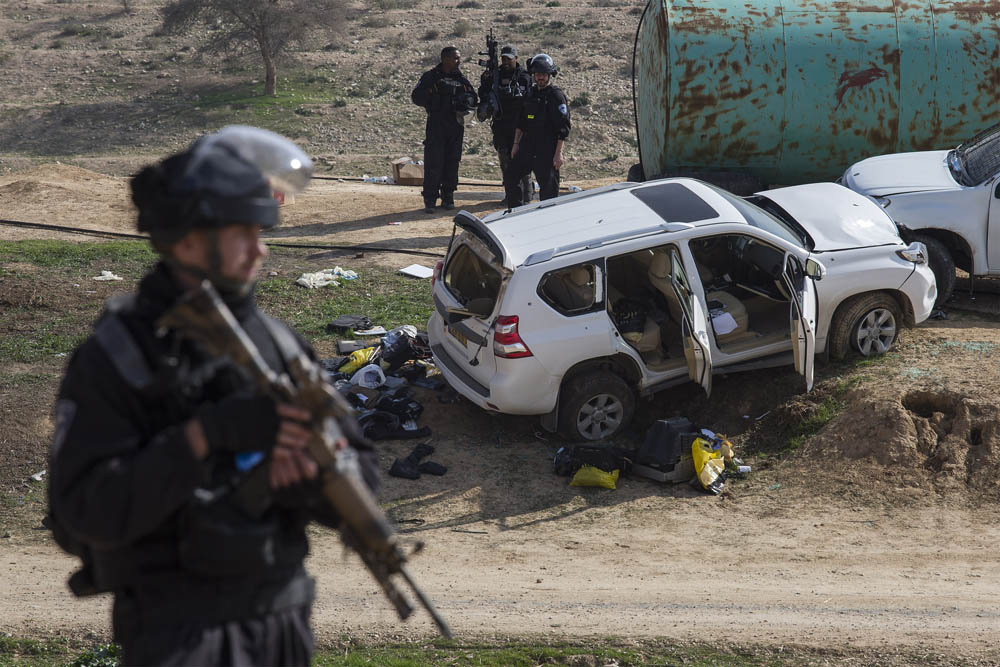
Officer S.M., meanwhile, provided differing accounts of the shooting to the Shin Bet, the police, and the PID. The full investigation materials were not handed over to PCATI, although the organization was provided a summary of the investigation, without direct quotes.
According to one document, “S.M. noted on his initiative that at the time… he did not feel immediate danger to his life or the lives of his friends.” Yet a Shin Bet official said S.M. told him that he “opened fire at the wheels and later at the driver.” This is a significant testimony, since during S.M.’s interrogation by PID, the officer claimed he fired only at the wheels. The PID noted this, but stated that they were unable to continue the interrogation since the testimony had come from a “confidential” source and was collected late and in an unorganized manner.
Contrary to what he told the Shin Bet, officer S.M. told the PID on January 23, 2017 that he opened fire because he felt a danger to his life and the lives of his friends. S.M. admitted that he was supposed to fire a warning shot in the air, “but in the situation I was in this was not a possibility. I decided to shoot in the direction of the car’s wheels in order to cause the driver to stop immediately.” During the next day’s interrogation, S.M. said he was carrying his gun with a bullet in its barrel during the raid “because it was dark around.”
“The decision to walk around with a loaded weapon contrary to procedures raises concerns that S.M. was light on the trigger,” says the petition. According to the petition, there was a “clear danger” that the decision by S.M. to shoot at a vehicle driving on a steep slope — at the bottom of which was a group of police officers — would cause the vehicle to tumble down.
The petition further states that S.M.’s questioning was “for the sake of appearance only,” and that “from viewing his testimony one can easily see that S.M. ‘guides’ the entire interrogation, since his testimony was taken through ‘dictation’ by an interrogator who neither asked him follow-up questions nor tried to confront him with the details he was providing.”
“What do you expect from a person who was shot by an M16 rifle from point-blank range in the right knee, which is responsible for driving?” asks Livneh. “They punctured the two wheels, shot at him from every side, what do you expect to happen at the end of his descent? That no more police officers were killed is a stroke of luck.”
Demanding justice
All this once again raises the question: why did senior police officials decide to send hundreds of armed officers to carry out a night raid on Umm al-Hiran as if it were some kind of military operation?
The police had arrived in Umm al-Hiran when it was already dark. “This unit tries not to work at night because it can lead to mishaps,” said Livneh. “But someone higher up decided it would happen. The gunfire took place in the first minutes of the operation, at 5:57, and dawn was at 6:15. Twenty minutes is an element of surprise? It’s not like they arrived at 2 a.m.”
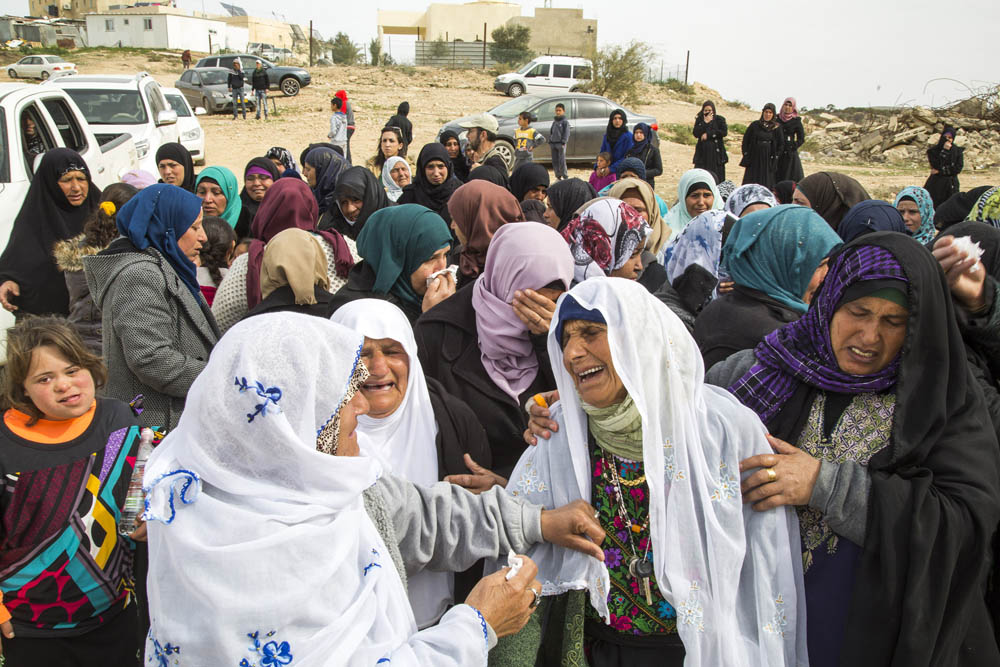
In the decision to close the case, the PID refrained from concluding whether Abu al-Qi’an carried out a “terrorist attack.” According to a statement by PCATI, “State Attorney Shai Nitzan may have all the evidence, but he chose not to make a determination on this question, which has tremendous significance for the Abu al-Qi’an family, who have not only lost a loved one, but must continue to fight daily to clear his name.”
“The Umm al-Hiran affair continues to affect the public and the media to this day,” PCATI’s statement continues. “It is a watershed moment in the relationship between the police and the Arab Bedouin public in particular and the Israeli public in general. To begin to repair these fraught relations, we must first go back to Umm al-Hiran, bring the police officers involved to justice, and bring justice to the families of the victims.”
In response, the State Attorney’s Office said that “the decision of the state attorney, which is fully published for the general public, speaks for itself.”


